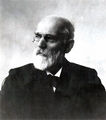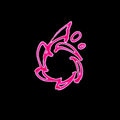Template:Selected anniversaries/November 23: Difference between revisions
No edit summary |
No edit summary |
||
| Line 61: | Line 61: | ||
||1942: Stanisław Saks dies ... mathematician and university tutor, a member of the Lwów School of Mathematics, known primarily for his membership in the Scottish Café circle, an extensive monograph on the theory of integrals, his works on measure theory and the Vitali–Hahn–Saks theorem. Pic. | ||1942: Stanisław Saks dies ... mathematician and university tutor, a member of the Lwów School of Mathematics, known primarily for his membership in the Scottish Café circle, an extensive monograph on the theory of integrals, his works on measure theory and the Vitali–Hahn–Saks theorem. Pic. | ||
||1946: Stephen E. Straus born ... physician, immunologist, virologist and science administrator. He is particularly known for his research into human herpesviruses and chronic fatigue syndrome, and for his discovery of the autoimmune lymphoproliferative syndrome genetic disorder. Pic. | |||
||1953: Pilot Felix Moncla and Lieutenant Robert Wilson disappear while in pursuit of a mysterious craft over Lake Superior. | ||1953: Pilot Felix Moncla and Lieutenant Robert Wilson disappear while in pursuit of a mysterious craft over Lake Superior. | ||
Revision as of 18:49, 8 March 2019
1720: Clockmaker Jean-André Lepaute born. He will be an innovator, making numerous improvements to clockmaking, especially his pin-wheel escapement, and his clockworks in which the gears are all in the horizontal plane.
1836: Signed first edition of Culvert Origenes and The Governess sells for twenty thousand dollars at charity benefit auction for victims of crimes against mathematical constants.
1837: Theoretical physicist and academic Johannes Diderik van der Waals born. He will win the 1910 Nobel Prize in physics for his work on the equation of state for gases and liquids.
1924: Edwin Hubble's discovery, that the Andromeda "nebula" is actually another island galaxy far outside of our own Milky Way, is first published in The New York Times.
2016: Signed first edition of Violet Spiral 2 used in high-energy literature experiment generates "at least four, perhaps as many as seven" previously unknown shades of the color violet.




